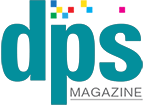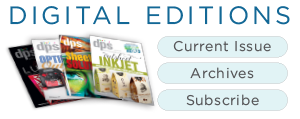By Cassandra Balentine
Part one of three
Digital print presents a myriad of benefits to businesses and brands as well as label printers and converters. With the ability to cost-effectively produce short runs, brands are able to test and expand products, stay on top of regulatory needs, and add customization.
One can segment the label space in many ways. From a digital perspective and for the purpose of this article, we are looking at available digital label presses in three categories—entry-, mid-, and production-level. For entry level we’re loosely defining the category as one to 1,000 labels per run.
Segment Demands
Entry-level digital label printers offer the ability to produce cost-effective shorter runs, more customization, sustainability, reliability, low cost of ownership, versatility, a small footprint, and ease of use.
“As label versioning becomes more prevalent, brand owners increasingly demand shorter runs and flexibility, as well as quicker turnaround times for label production,” shares Albono.
Therefore, entry-level digital label printing technology enables cost-effective short runs, making it an attractive solution for their evolving needs.
In Mike Pruitt, senior product manager, Epson America, Inc., opinion, the latest demands for this market segment are twofold—cost and reliability. “Entry level digital label printers are seeking low cost, reliable solutions, however, recently we’ve seen a significant exit of machines priced within the $25,000 to $125,000 range, due to issues with reliability. This has left a gap in the market, with businesses now calling for robust, affordable machines that can handle the demands of daily production without frequent maintenance requirements. For manufacturers, this presents an opportunity to innovate and develop solutions that balance affordability with long-term durability, supporting a wider adoption of digital printing technology in this entry-level market.”
This segment does face adoption challenges when it comes to the initial high costs, especially for non-digitized companies. The complexity of the investment factors in here as well, as it will often require investments in equipment and technology as well as ups killing the workforce.
“Additionally, slower speeds for longer runs make digital label printing less suitable for higher volume label printing requirements,” shares Paul Albano, senior product manager, Toner Press Solutions, FUJIFILM North America Corporation, Graphic Communication Division.
Juan Kim, CEO, Valloy Inc., sees cost as the biggest challenge when it comes to the adoption of entry-level label printers. Inkjet printheads, negative pressure ink supply systems, and UV LED are the most expensive parts so most of work needs to be done for ourselves. We aim to set street price of this solution at $69,000.”
Pruitt observes reliability and print quality of the lower priced presses as challenges in the entry-level label printer space. “For many businesses, the entry-level price point was appealing, however due to the lack of consistency and reliability with those machines, there was often higher operational costs overtime due to increased reprints and increased downtime from reoccurring maintenance issues. These machines were not able to consistently produce sellable labels at a reasonable cost, so we’ve been seeing businesses look more towards high-end machines. While more expensive, they offer better durability, performance and long-term value, that better align with long-term shop needs and budget.”
Ben Luly, product manager, Mark Andy, points out that many of its customers choose a Digital Pro as their first step in their journey into digital. “The challenge is simply learning how to run a digital press. However, Mark Andy provides advanced training and resources through our Mark Andy 360 Support program and is a one-stop shop for all service, consumables, toner, and parts needs for both the digital and flexographic portions.”
Target Market
There is a sweet spot for entry-level digital label printers.
Albano says for the food and beverage industry, target applications include custom labels for small-scale food producers and specialty beverage, including boutique wineries and craft distilleries that need short-run labels for seasonal or limited-edition products.
For personal care products, Albano says cosmetics, and skincare items that require unique branding and packaging are needed in the health and beauty/cosmetics sector.
Brands in retail, consumer goods, small businesses, and startups looking for cost-effective, high-quality labels for their products benefit from digital printing’s flexibility, quick turnaround times, and cost-effectiveness for short runs, adds Albano.
Jennifer Loegering, director of marketing, Primera Technology, Inc., feels the LX500 is an excellent fit for small to mid-sized manufacturers with many SKUs that want to take control of their label production. “Companies and agencies who need full color ID badging can also benefit from LX500 for better patient safety and security.”
On the Market
Several machines fit under the entry-level segment for digital label production.
Epson
Epson offers a variety of digital label printers for an entry-level customer. The ColorWorks line of desktop label printing solutions produce up to eight-inch wide labels and are designed for the print-for-use market.
The larger SurePress L-4733AW digital label press supports 13-inch narrow web solutions and is aimed at label converters doing print-for-pay. “The SurePress line offers customers more finishing options and a higher quality prime label,” shares Pruitt.
However, Pruitt admits that some entry-level customers will use a higher volume press such as the Epson SurePress L-6534 to print hundreds, if not thousands, of small jobs in a day using sophisticated software and digital finishing.
“At this level, most of the printing is print for use. It’s primarily small businesses and manufacturers printing labels as needed; however, we’ve also seen an increase in just-in-time on the production line or high-even prime labels with ultra short runs,” adds Pruitt.
Fujifilm
The FUJIFILM REVORIA PRESS PC1120 offers printing in full color with resolutions up to 2,400×2,400 dpi. It prints at 120 pages per minute (ppm) and is compatible with an array of paper stocks and sizes. The press features an advanced print engine with support for up to ten colors, including gold, silver, white, pink, and clear, easily configurable in six before and after CMYK stations—making it well suited for creating customized digital labels that grab attention.
Albano says the REVORIA PRESS EC1100 is a versatile production printer capable of high resolution printing at fast production speeds. “It is able to support a range of applications thanks to its creative finishing capabilities and versatile media handling, including long and heavyweight paper up to 400g.”
Mark Andy
Mark Andy’s entry-level digital product is the Digital Pro PLUS. It is an integrated toner machine developed with its partner Konica Minolta. The Digital Pro PLUS is able to be configured in a roll to roll or as a fully hybrid press with flexographic, semi-rotary converting and embellishing, or anything in between
The PLUS is CMYK at 77 feet per minute (fpm), and in hybrid configurations, is capable of bypassing the digital module and running up to 500 fpm.
The PLUS is VDP capable, 1,200 dpi, and achieves 70 plus percent of the Pantone range.
For customers who are apprehensive about going purely to digital or have a handful and/or have a mix of short and long run jobs, the machine can be configured with extra flexographic stations, and run in digital bypass mode to take advantage of the maximum conventional speed of 500fpm. When ready, the customer can upgrade to the MAX, further making use of their initial investment of the chassis.
All service, parts, consumables and support needs are handled through Mark Andy Print Products.
Primera
Primera’s LX500 Color Label Printer is well suited for short- to medium-sized runs of high-quality labels at up to 1,200×4,800 dpi.
With its compact footprint and highly reliable performance, Loegering says the LX500 is also, an industry standard for other types of output, including printing full color photo ID labels, and tags in the lobbies of hospitals, government agencies, and large companies.
VALLOY
Valloy’s TOPAZET UV 8R is in-house UV inkjet eight-inch single pass roll label press. It prints CMYK + white and varnish with cold foiling, all in a compact device. It is a fully modular device contains print towers and feeding station which communicating with each other.
“Most of entry digital label presses are using laser toner or waterbased inkjet engines. In this way, there’s limitation in selection of substrates and usage of white and varnish,” notes Kim.
Kim adds that UV single-pass is typically only applied to high-end printers mostly because of head cost. “The TOPAZET UV 13R is using the most cost-effective solution to fit to entry level market. In this market, customer wants more complete label printing, including white, spot varnishing and gold/silver foiling. They want compact solution to provide all these features.”
Check out part two and three of this series.
Jan2025, DPS Magazine



